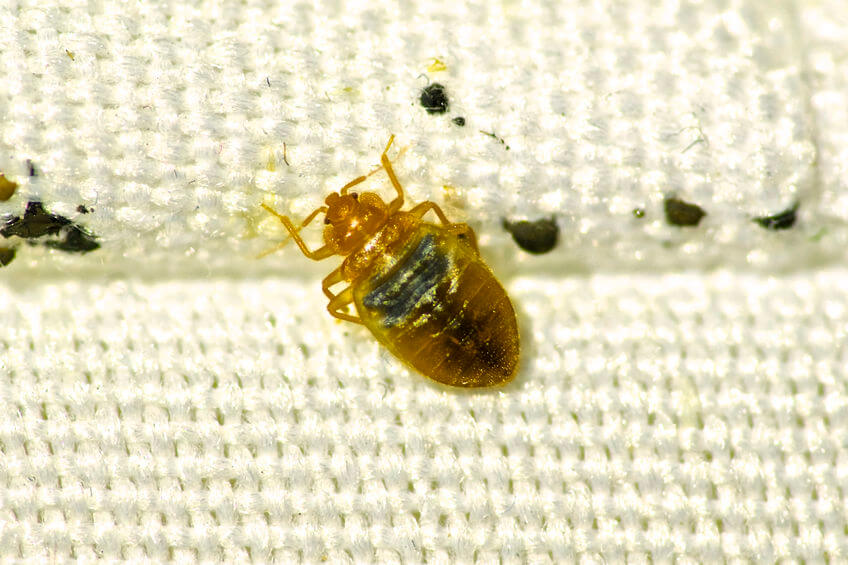Effective Bed Bug Exterminator: DC Services with Heat Treatment
Effective Bed Bug Exterminator: DC Services with Heat Treatment
Blog Article
Checking Out the Science Behind Bed Pest Warm Treatments as a Lasting Insect Monitoring Method
In the realm of bug management, the mission for effective and sustainable services continues to be a constant quest. One such method that has obtained traction in the last few years is using warm therapies to combat bed insect problems. By taking advantage of the scientific research behind thermal death points for these relentless pests, warm therapies supply a promising choice to traditional chemical-based methods. The details of how warm properly eliminates bed bugs and the wider effects for sustainable bug management practices make this a topic worth checking out better.
Bed Pest Warmth Therapy Process

Thermal Death Point for Bed Bugs
Exposing bed bugs to elevated temperatures past their thermal tolerance array is vital for accomplishing effective eradication in warmth therapy processes. The thermal death factor for bed insects refers to the temperature level at which these parasites can not make it through. Research study indicates that bed pests begin to perish when subjected to temperatures over 113 ° F(45 ° C) for a sustained duration. As the temperature increases, so does the death price of bed bugs. At around 118 ° F(48 ° C ), bed pests begin to die swiftly, with a mortality rate of nearly 99% within mins of exposure. This shows the level of sensitivity of bed insects to heats and highlights the effectiveness of warm treatments in removing problems. By reaching and maintaining temperatures over the thermal fatality factor for bed pests, insect monitoring professionals can guarantee thorough elimination of bed insect populaces, consisting of hard-to-reach locations where chemical therapies may be less efficient. Recognizing the thermal death point for bed insects is important for carrying out effective warmth treatment methods and achieving lasting pest monitoring outcomes.
Advantages of Warmth Treatments
Having actually established the crucial thermal death factor for bed insects, it is necessary to now explore the substantial benefits that heat therapies use in efficiently eradicating these resistant bugs. When compared to traditional chemical approaches, warm treatments existing numerous key benefits. Among the main benefits is that warm can pass through deep into splits and crevices where bed insects conceal, making sure that even the most hard-to-reach locations are heated to dangerous temperatures. This thorough approach not just eliminates live pests but likewise targets bed pest eggs, avoiding future problems.
Furthermore, heat treatments are eco friendly and non-toxic, making them a sustainable insect administration approach. Unlike chemical pesticides, warmth treatments do not leave hazardous deposits that can posture risks to human health or the environment. This aspect is particularly essential in sensitive atmospheres such as health centers, schools, and domestic areas where chemical use may not be desirable.
Additionally, heat treatments have a high success price in removing bed pest problems in a solitary therapy, lowering the demand for numerous brows through and decreasing disturbance to owners. This performance not just saves time and cash yet additionally supplies satisfaction to those taking care of bed insect issues.
Efficiency of Warm Treatment

Heat treatments have the added advantage of eliminating bed bug eggs, which are typically immune to traditional chemical treatments. Generally, the performance of warmth treatments in eliminating bed pest problems makes them a dependable and sustainable pest management method.
Lasting Parasite Monitoring Benefits
Carrying out sustainable insect management methods provides long-term benefits for both the setting and public health and find this wellness. By using methods such as heat treatments for insect control, we can decrease the reliance on damaging chemical pesticides that can have negative impacts on communities and human health - exterminator near me. Lasting pest monitoring methods assist in maintaining biodiversity by targeting certain insects without damaging non-target microorganisms, consequently keeping a well balanced environment
Additionally, lasting bug administration practices add to the general wellness and well-being of the general public. By lessening direct exposure to harmful chemicals used in standard pest control techniques, warmth treatments give a safer option for parasite administration in household, commercial, and public areas. This decrease in chemical use also assists in preventing pesticide deposits from infecting air, dirt, and water, protecting environmental top quality.
Conclusion
In final thought, bed pest heat treatments have actually been revealed to be a lasting and effective parasite management method. The thermal fatality point for bed pests makes them susceptible to warmth treatments, which have various benefits over conventional chemical therapies. The effectiveness of heat treatments in removing bed insect problems while reducing ecological influence highlights the potential of this approach as a sustainable option for parasite control.
The bed pest warm therapy procedure entails increasing the temperature level within ravaged locations to a degree that properly eliminates bed pests and their eggs. By getting to and maintaining temperatures above the thermal death factor for bed pests, parasite management professionals can ensure comprehensive elimination of bed see here bug populations, including hard-to-reach locations where chemical therapies might be much less reliable. One of the key benefits is that warm can pass through deep right into holes and splits where bed insects conceal, making sure that also the most hard-to-reach locations are heated up to deadly temperatures. Unlike chemical treatments that may leave behind resistant populations, heat therapies use a ecologically friendly and safe option that can pass through deep into furniture, walls, and various other hard-to-reach locations where bed bugs hide.
The thermal fatality factor for bed bugs makes them susceptible to warmth treatments, which have many benefits over conventional chemical therapies.
Report this page